Lynnview Ridge
Built in the early 1980s, incredibly atop land that was once a dirty old oil refinery, the former community of Lynnview Ridge was demolished some ten years ago out of fears of soil contamination within the area. The big question on everyone’s mind is why would they build on what is a clearly polluted land in the first place? Your guess is as good as any! Leveled only two decades after being built, the neighbourhood is now empty fenced-in fields. Where hundreds of people once lived, now there is pretty much nothing.
Located on Calgary’s east side, Lynnview Ridge sits on a high escarpment overlooking the Bow River and a busy highway to the west, and the huge CPR Ogden shop complex (parts of which were being demolished as we wrote this) to the east. To the north and lower down by the river is another open field that was also part of the refinery – there was never any housing built on this section of land and today it’s an empty green space called Old Refinery Park. To the south are the communities of Millican Estates, Lynnwood and Ogden.
From the mid 1920s to the mid 1970s, an Imperial Oil Company refinery once stood at the site seen here. Actually the Lynnview Ridge section was part of that complex’s tank farm and the actual refining took place lower down by the river. Photos from when the plant was in operation show perhaps a half dozen HUGE tanks roughly where the main road into the community is today (Lynnview Rd. SE).
In the fifty years that the plant operated, especially in the early days when rules regarding the environment were pretty lax, surely a lot of chemicals were spilled or leaked out of the tanks and pipes, polluting the site. When the complex was demolished who in their right mind would think that building houses here was a good idea. They MUST have known it was contaminated.
Anyway…they built.
The community dates from the early 1980s during one of Calgary’s boom periods, a time when houses were being built at an incredible rate. Any home, no matter where it was located would be snapped up quickly by eager buyers. It’s probably due to this the demand and the huge profits that were being made by developers, which allowed houses to be placed here in the first place. Some have said the city looked the other way, knowing the dirty little secrets here, but desperate for more housing for its populace. Others suggest that the developers, who also knew very well what was in the ground, greased some palms (grease, get it) and paid hush money. Who knows the motives, although we can say with certainty that greed was one of them.
One question that begs to be asked – what about the people who moved to the community? Were they told of its ugly past and if so did they also look the other way? Quite possible given the housing shortages at the time, at least for some. It was a crazy market then where any dwelling would sell, even those in Lynnview Ridge as it turned out. Or did the development company outright lie or at least downplay the dangers? I can’t help think all scenarios mentioned were played out to some degree or another and money and frenzied demand conspired to create an atmosphere of lies and denial on all sides. If you build them, they will come, apparently even if a house sits on top poisoned land that was once a dirty old refinery. Still, I’m certain some residents, for any number of reasons, simply did not know what lurked below.
The houses that once stood here were for the most part low income properties. There were anywhere from 150 to perhaps 200 separate residences depending on the source. Given that, this could mean at least a few hundred people (or more) were displaced when the neighbourhood levelled.
When the refinery was built in the 20s, the location was at that time far from the city, with only the tiny community of Ogden being nearby. The complex was just west of the CPR mainline and the CNR even had tracks that actually bisected the complex and both railways appeared to have spur lines into it. Also, a street car line, travelling between Calgary and Ogden. passed in front of the plant and presumably many workers arrived this way.
The nearby Bow River provided water for the plant.
The Glenbow Archives have a number of photos showing the refinery under construction and in operation during its early years. It’s fascinating stuff!
The exact reason the plant closed has not been found by this author. Was it changing markets, outdated equipment, spiralling operating costs – who knows? It was shut down in 1975 and demolished soon after. Today busy Deerfoot Trail bisects the northern part of the old refinery site.
Lynnview Ridge was quickly built after the refinery was demolished and was full of houses by 1980. It’s not known if a rudimentary clean up was done prior to any of these dwellings being built but based upon what this author has researched so far, I would say nothing was done.
As early as the mid 1980s residents reported seeing evidence of contamination in the soil (an oily film) but it appears that no actions were taken at that time. I guess those living here would just have to put up with it. Given that, a backyard garden was probably a bad idea.
The years passed and nothing was done. That was until 2001 when the axe fell and without any real warning, everyone was asked to leave due to toxic stuff “recently” found in the soil (yeah, recently). Eventually, and some fought this for a while, everyone was bought out, and given what most would say is fair market value for their homes (and some would say not). These dwellings were then quickly demolished, around 2002-2003. Afterwards the layer of contaminated soil, full of lead and hydrocarbons, was removed and replaced with clean fill. Or so they say.
Finally, the streets were blocked off to traffic and housing areas were fenced off completely.
The road into the community is still there, as are street and bus stop signs. Light standards were left in place too and oddly were lit, and trees line the roads. Off to the south, houses bordering the Lynnview Ridge community are still lived in. A line was drawn and on one side there are dwellings and the other fenced in fields that outside of trees and grasses, are for the most part empty. It’s a strange ghost neighbourhood.
Walking the road one can almost imagine the din of a vibrant neighbourhood. It’s a lovely fall day and cars would pass on the road, children would play in the yard, dogs would bark and for a moment the community was alive again. But it’s only imagination and soon one realizes the only noise is that of the wind in the trees and from traffic on nearby roads.
This is by no means a full history on the refinery and Lynnview Ridge, the whole story is just too complex. There are also large gaping holes in its history, maybe hidden because of its dirty past?
It’s not clear what’s in store for the now empty neighbourhood…or almost empty and a few houses still exist on it’s extreme western edge. Will it become park land as suggested? There is some talk of a golf course or even housing returning to the area. Hmmm.
So far clean up expenses have been the neighbourhood of 20 million dollars give or take a few mil’, a cost shared by both Imperial Oil and the city.
We’ve included a Google Maps image showing the neighbourhood and its surroundings. In the centre are the empty streets and fields that was once the community. To the north is the CNR tracks mentioned and right above it, the Old Refinery Park, a green space. The winding highway crossing the river is the busy and noisy Deerfoot Trail. To the east is the CPR’s mainline and its Ogden Shops complex, and to the west, Beaver Dam Flats Park and the Bow River. Finally, to the south are the neighbourhoods of Millican Estates and Lynnwood. Note that a few houses remain in Lynnview Ridge on its western edge.
Map image courtesy of Google.
Not far from Lynnview Ridge is the CPR’s Bonnybrook railway bridge which failed during the June 2013 floods…
Collapsed Bonnybrook train bridge
If you liked this article, you might want to check these posts out as well…
The (Big Yellow) Enoch Sales house.
Bow City townsite – with ForgottenAlberta.com.
Dorothy Alberta.
If you’d like to know more about what you’ve seen here, by all means contact us!
Date: October, 2013.
Location: Calgary, AB.
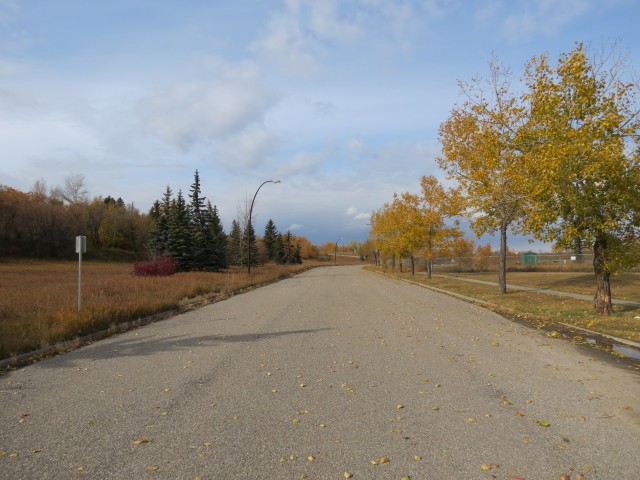
The road into Lynnview Ridge, open to pedestrians but not vehicles.
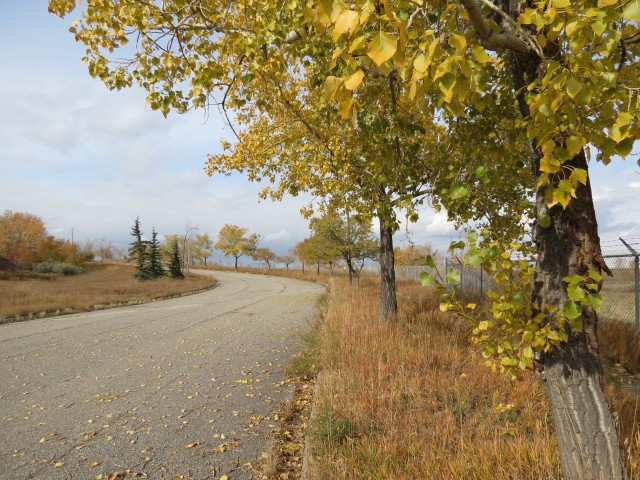
It was a beautiful fall day…
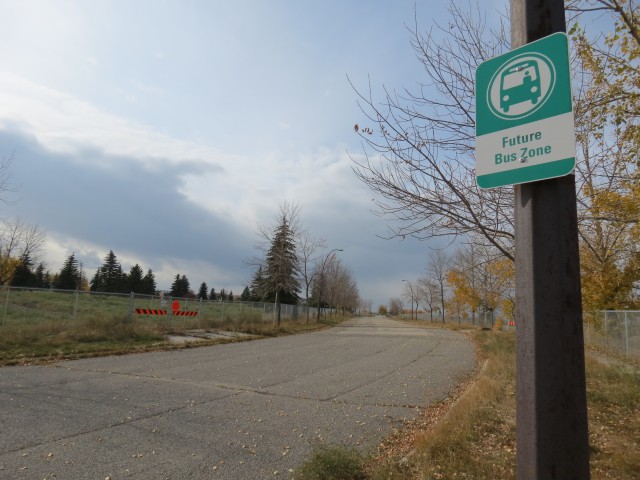
It’ll be a long wait.
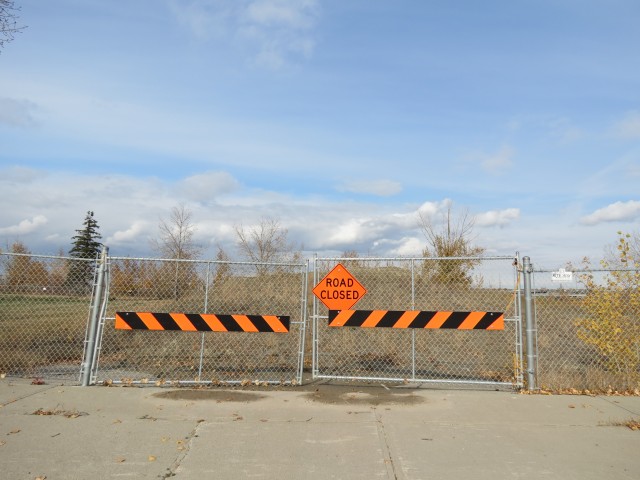
The fields where the houses once stood were fenced off.
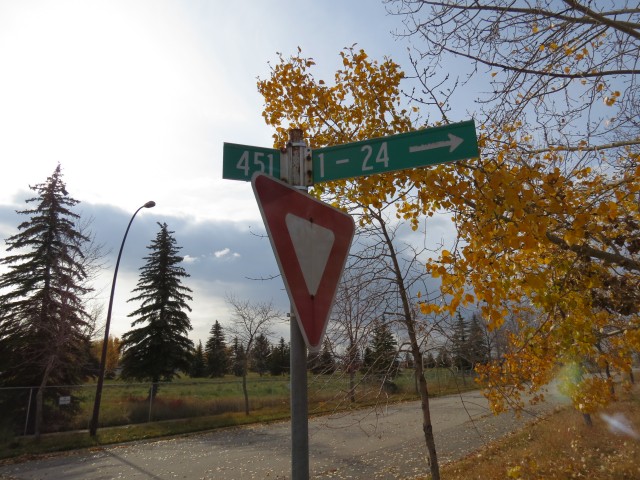
Old street signs that were left behind.
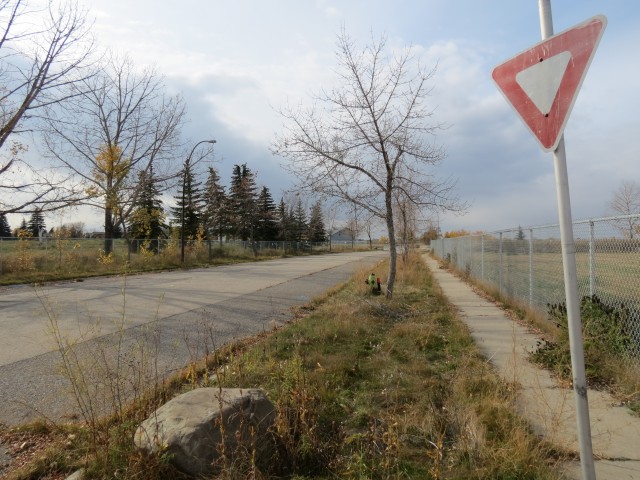
At one time an oil refinery stood on this location.
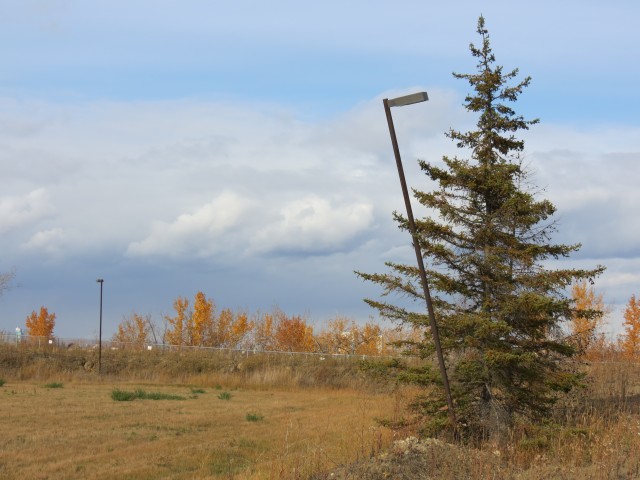
They must have known the site was contaminated before building here.
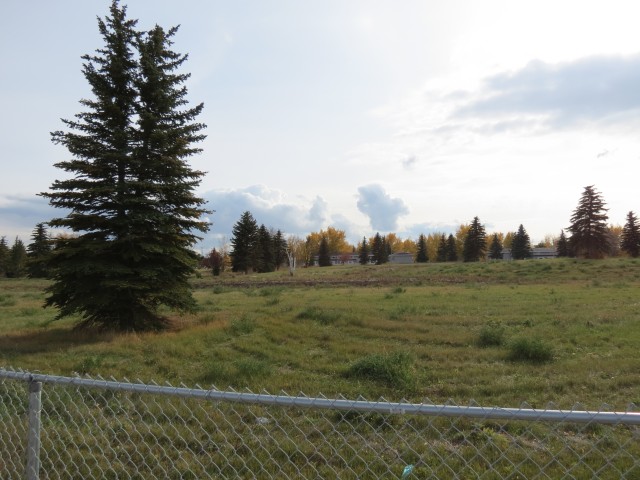
A second empty field where hundreds of people once lived.
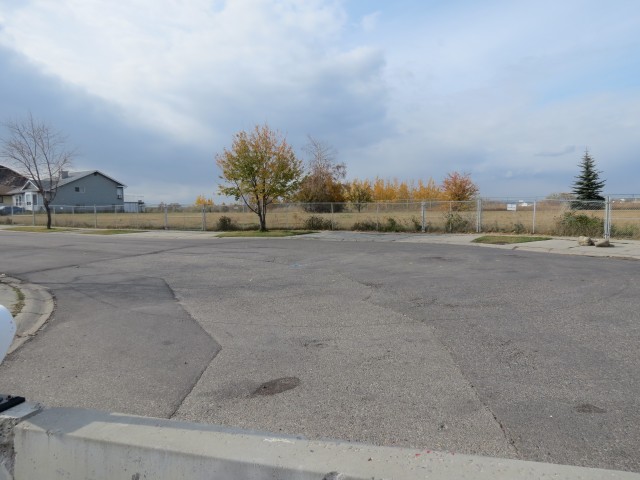
The edge of the site, with lived-in homes to the left.
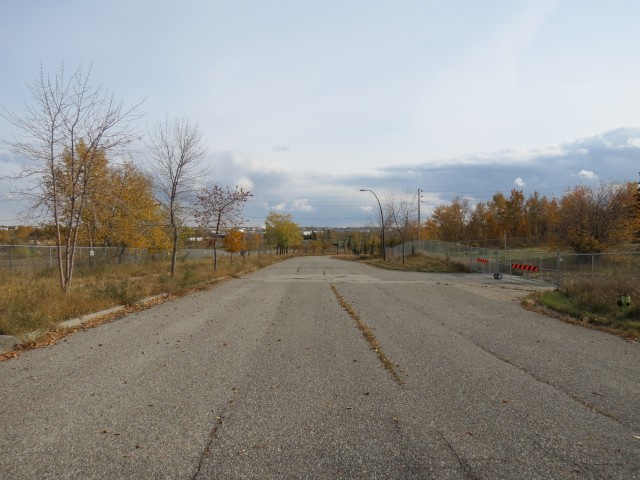
Looking down the main street (the only street) into the community.
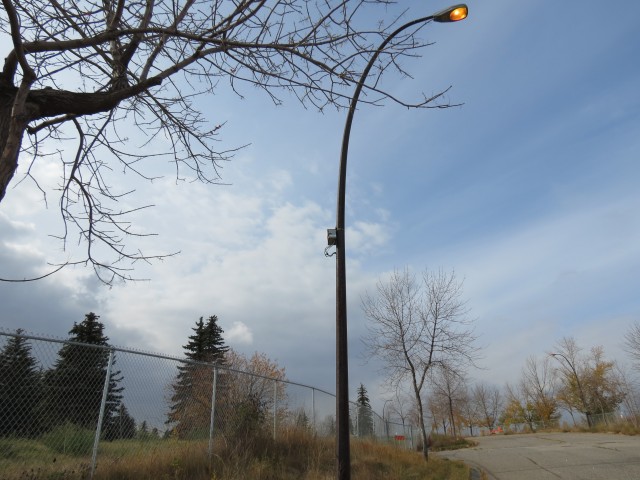
Oddly, the street lights were on.
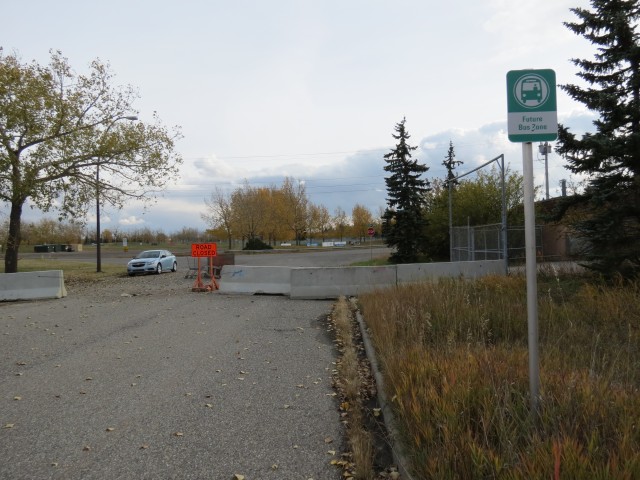
Another bus sign left behind.
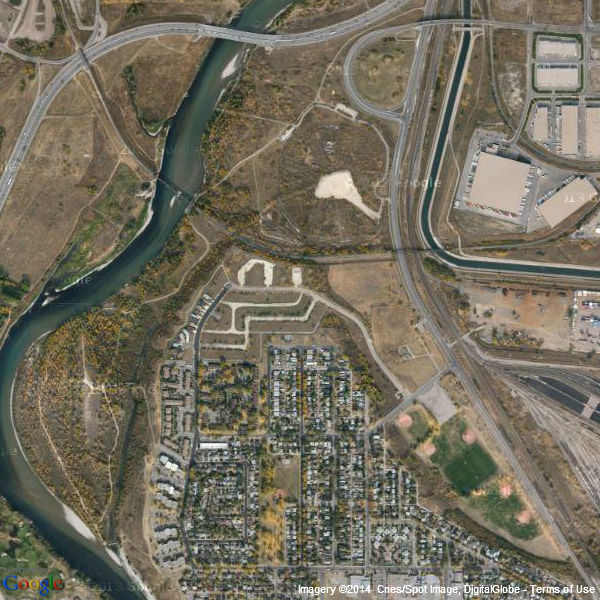
A Google Maps image showing the empty streets in Lynnview Ridge (centre).

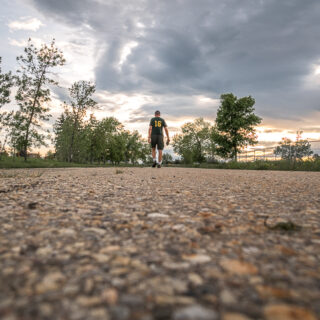
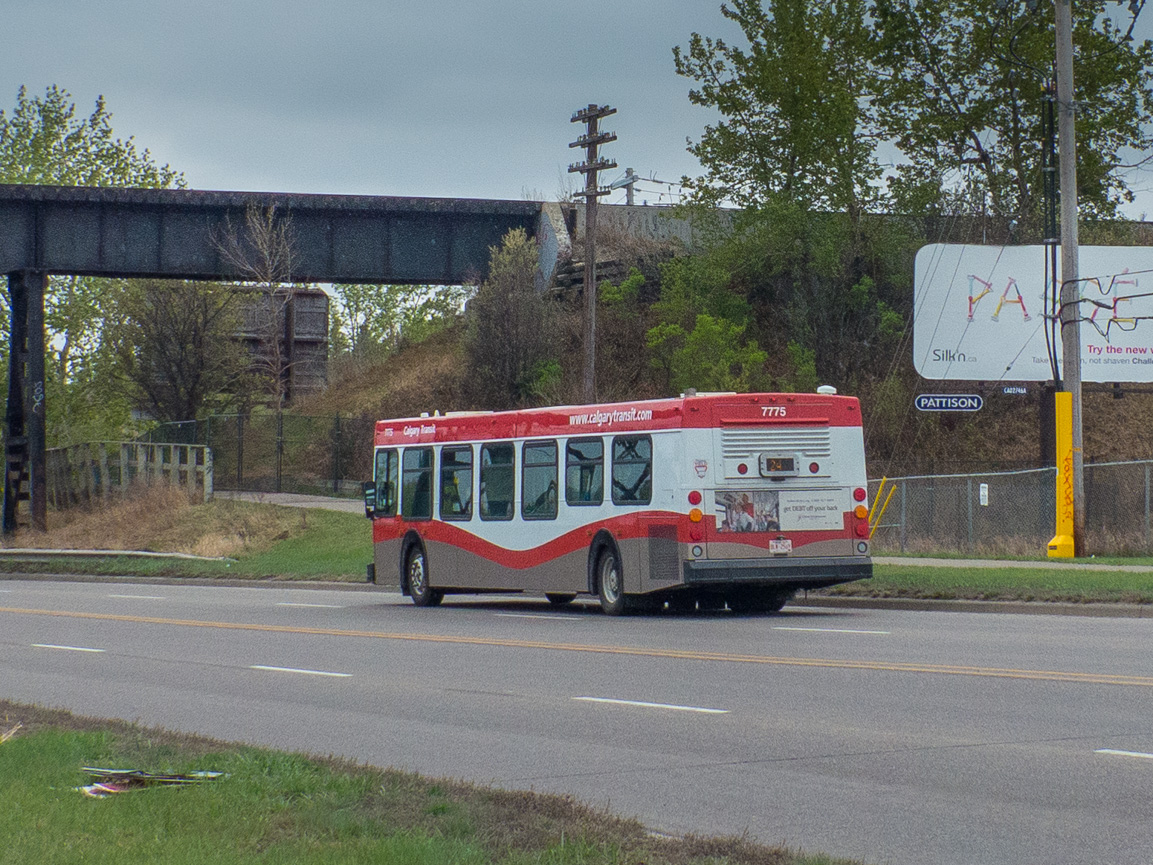
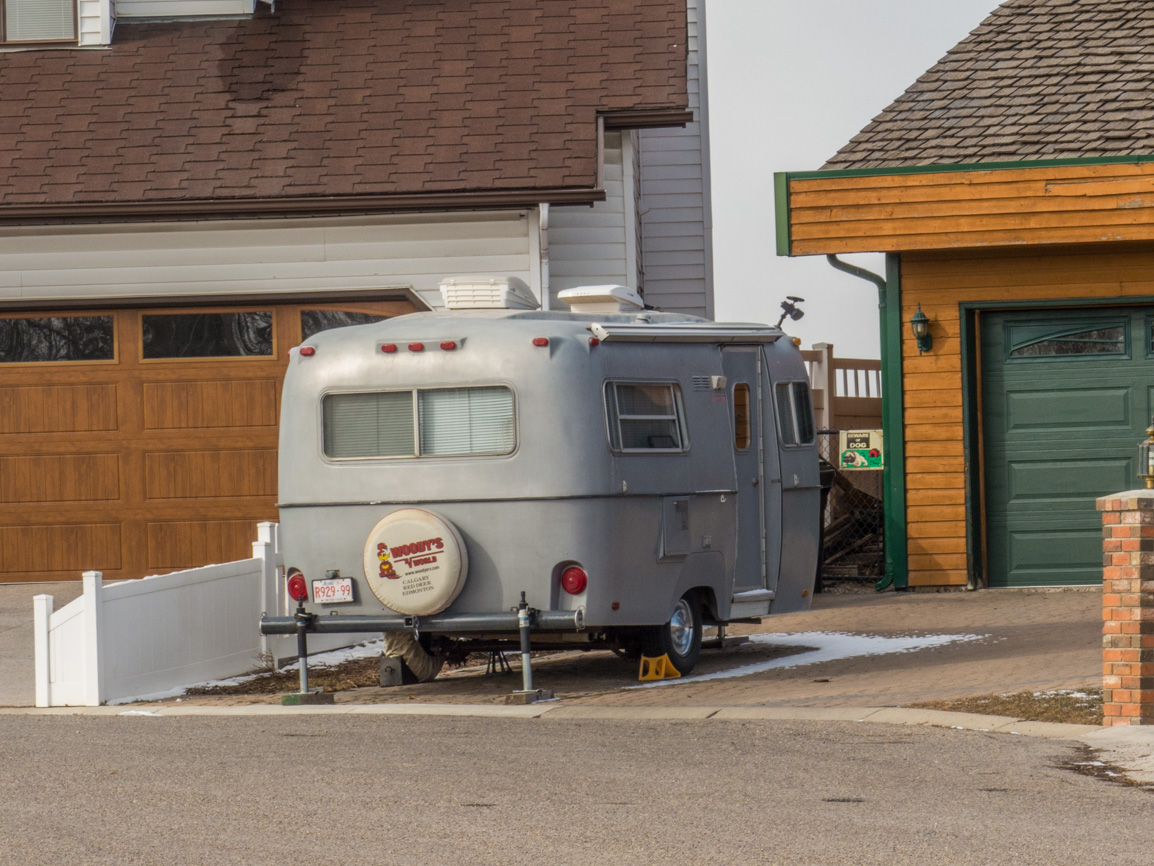
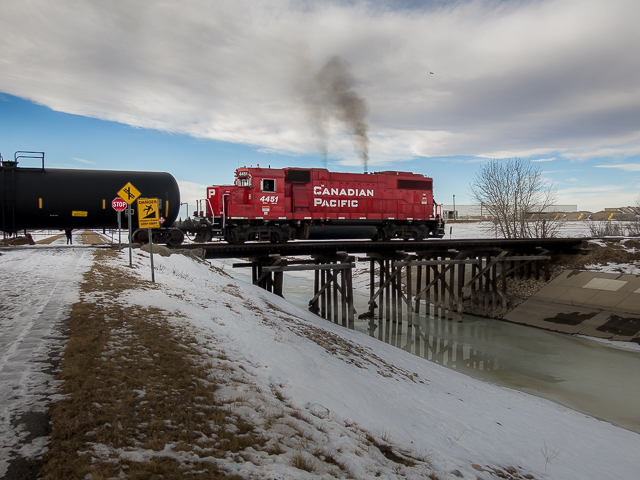
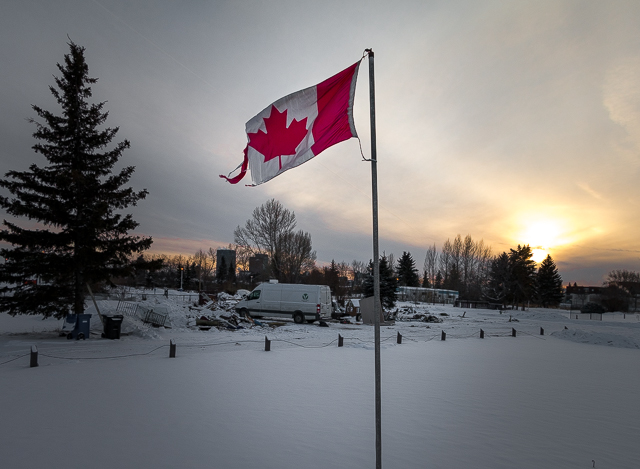
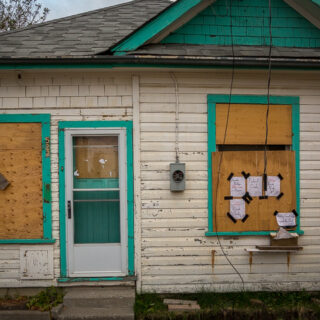
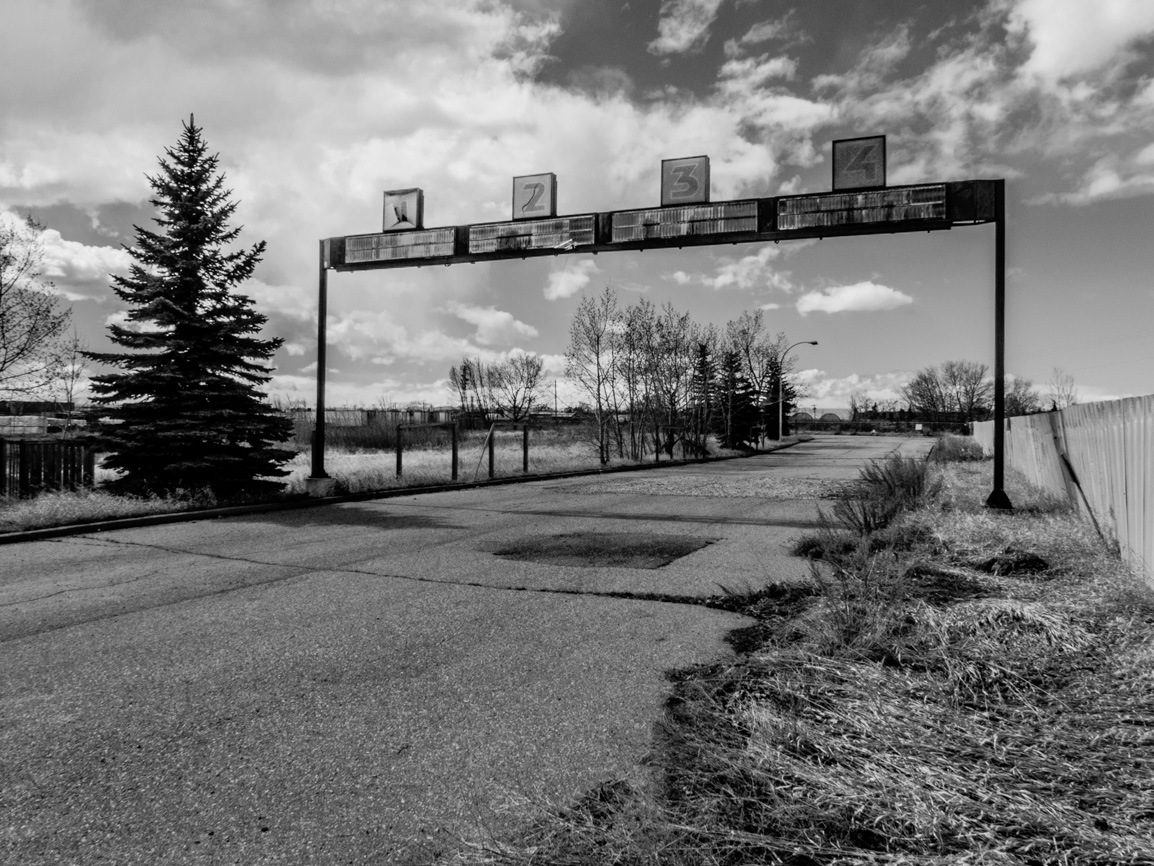
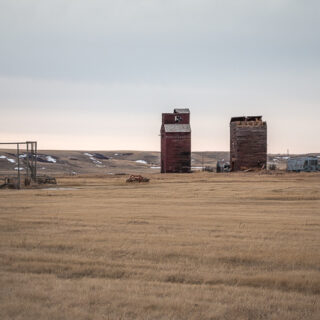
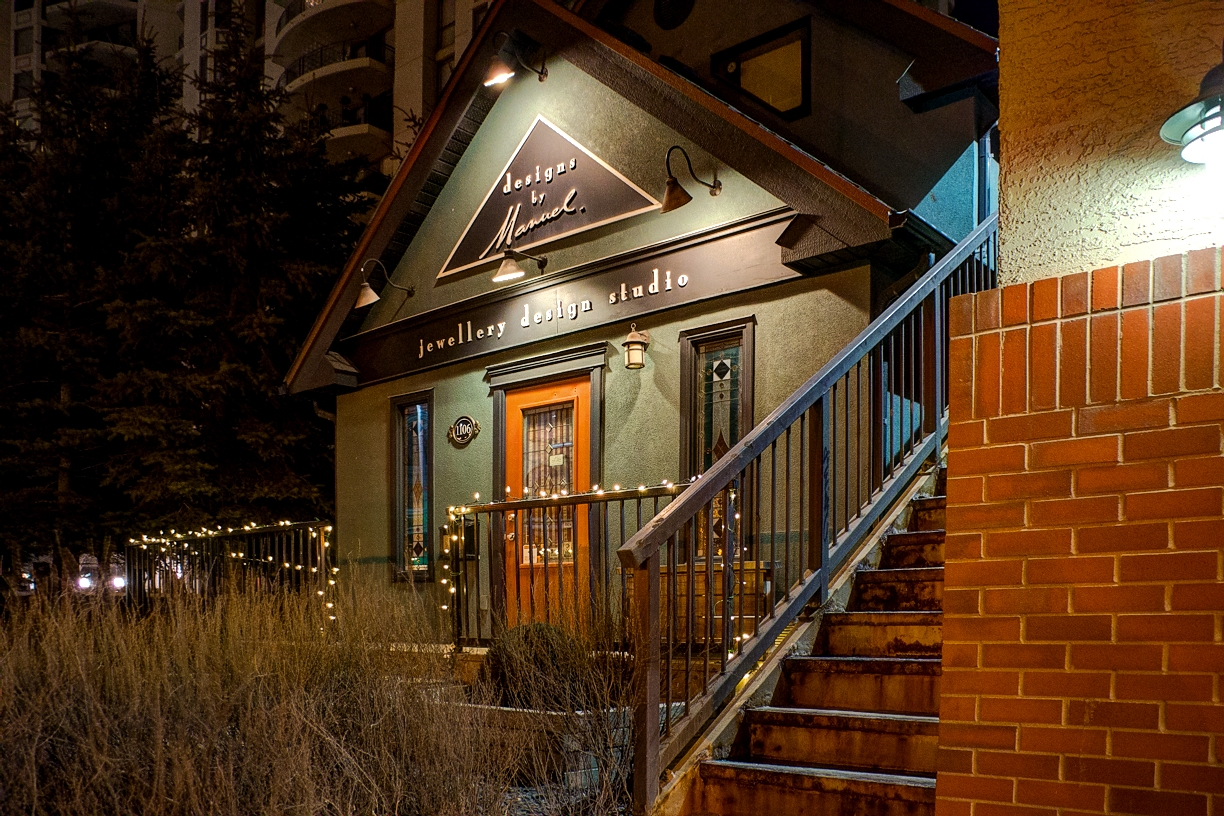
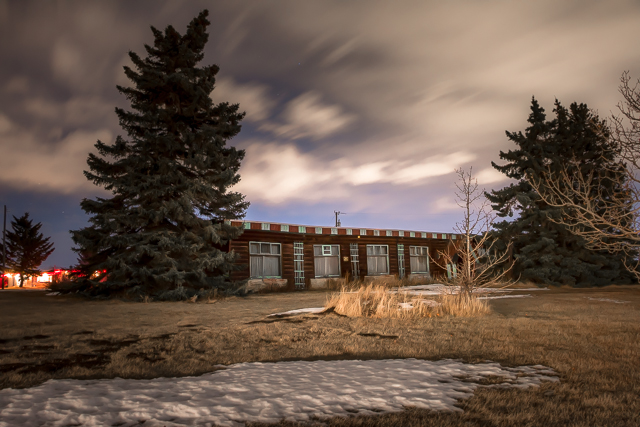
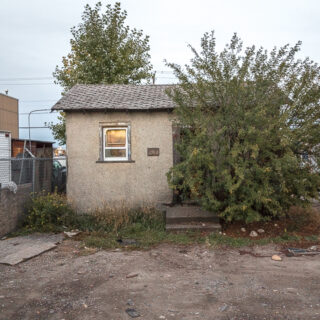
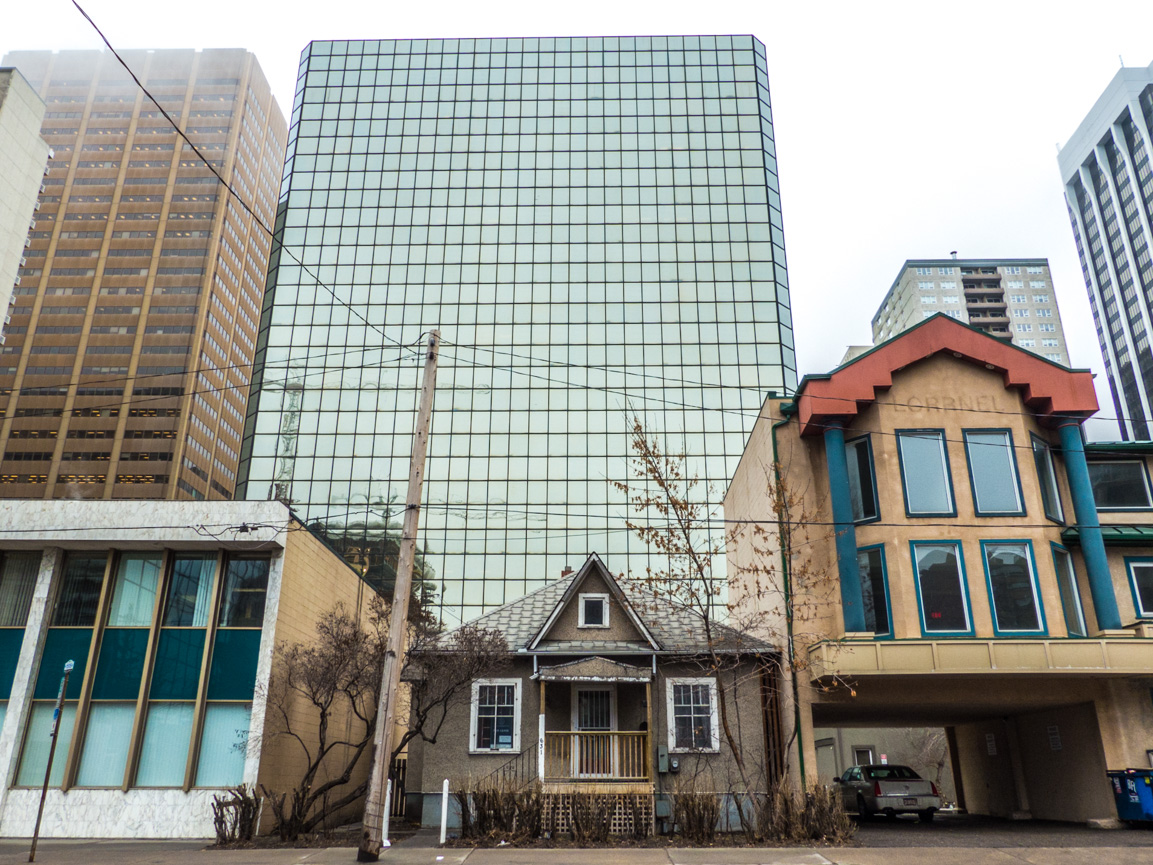
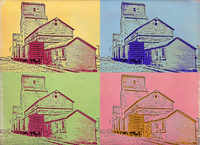






I still cannot believe that they built these homes in the early to mid 80s, and then ended up demolishing everything else 20-30 years later. LOL
It boggles the mind and that it happened at all sure is a head scratcher.
Was it possible for them to decontaminate the soil without demolishing anything?
The refinery was there for a long time and with the lax standards of the day I suspect there was no other options.
It still stinks when you drive from 50 ave se to Ogden road !!
We’ve heard that from others too. We must not have sensitive enough sniffers, but I can just imagine.
Grew up in Millican … went to school at the ‘Cottage School’ on 18A Street. The area in question was a tank farm, and down along the river inside the Imperial Oil fence, there were two dug-out pits filled with thick black goo. These pits weren’t for the public eye. You had to know where they were hidden. Saw a duck trying to get out of one of the pits. Sad. There were black seepage marks on the river rock well downstream of these pits.
The original Millican house sat on the top of the bank, not very far from where the fence was then located. The basement walls were all hand laid rock, and debris had filled most of the basement.
We lived on 18th Street. Prairie across the street. The street was sprayed with tar to keep the dust down. A fire break was graded around the community. There was a native family living at the old homestead down at the Beaverdam.
Lynwood-Crestwood was still prairie …. but, not for long.
Wow, amazing! I can just picture it all…so many changes since then. Thanks for sharing and adding to the story!
As to the reason for the refinery closure. Imperial closed down three refineries in western Canada; Calgary, Regina and Winnipeg and in turn expanded Edmonton (Strathcona Refinery)
Ahh, a consolidation of facilities. Makes good sense. Thanks for commenting!
(via Facebook)
I dispute the alleged claim.
I had done work at that refinery for years.
No area of the refinery became residential.
The refuse dumping area was 20-30 ft lower than the top of the land.
The dumping area was not for fluids. Construction materials like concrete,wood were dumped in that area. No way was any refinery ground transferred to the residential area of Lynnwood.
Lynnwood us however filled with lots of Alkaline soil..
We poured Sulfate resistant concrete to protect house foundations.
Old photos clearly show a tank farm right where Lynnview Ridge lands are today. Not saying they deliberately dumped petrol products here, just that perhaps they were a bit sloppy. Of course they were, it was the old days. They didn’t care for the environment then as they do today.
(via Facebook)
Interesting (and sad) article.
Thanks for taking the time to read it.
The City should have never allowed this tract of land to be developed…it’s as much their fault as it is Imperial Oil’s…
Spot on! There’s also greedy developers and head-in-the-sand home buyers. These bear the blame too.
Part of the refinery site became a site for a greenhouse. The ground was degassing so much that the plants all died. The greenhouse was moved to Newfoundland. It failed there, as well. Check pages 215/216. https://books.google.ca/books?id=YAej_IB2IOYC&pg=PA215&lpg=PA215&dq=sprung+greenhouse+calgary&source=bl&ots=fyCFy-Vahs&sig=0nL1bpkPMQLhXl2HpHLitztPzV4&hl=en&sa=X&ved=0ahUKEwjt3ZLu38_RAhUpxYMKHY4vAt84ChDoAQg1MAU#v=onepage&q=sprung%20greenhouse%20calgary&f=false
If I recall right, Kenny Rogers was an investor.
A few people have written us about this. I was not aware. What a disaster!
I like where your page seems to be leading. You may want to look into the Sprung Greenhouses property a little north of there. Also on an old refinery site. The company moved to the east coast after environmental issues on that site off Ogden rd.
Love your work, keep it up.
A few people have messaged us about the greenhouse operation on the lower refinery lands. Never knew, but looked into it. Looks like a case study on how not to run a business.
There are some enaccuracies in your article. My wife is the original owner of one of the remaining ridge homes in Lynnwood. There were a small number of us that remained behind to ensure the area got cleaned. Our efforts continue to be successful and Imperial Oil has spent several hundred million dollars toward repurchase and remediation of the the land. They are working together with the province and the city to create a new park area and enhanced amenities for the use of the entire community. For the remaining homes along the ridge, all the properties were cleaned to strict standards permitting residential use. All owners received written documentation from the province that their properties are clean and fit for residential occupancy. The ridge itself was also cleaned as was the land across the road from the ridge, although these areas are cleaned to a level permitting green space park use. The land across the street has been reseeded and will end up being a park with the fence coming down once the grass cover has matured. There is major work going on in the area inlcuding a new portion of the bike path, a new water filtration plant and environmental enhancments to Beaver Dam Park. If you want your article to be eccurate, you should look at updating your information.
You mention inaccuracies without citing specific passages. We’re a bit stumped. Anyway, what you touch on was not really discussed much within the article. It instead focused only on the section of the community that was levelled and the events leading up to that and not the part still lived in today. That’s pretty much where it ended. Still, I referenced the sources used by us and for the date the post was published (online and in print media), in early 2014, it all checks out. I guess what you said could be a sort of postscript to the story, which is by no means bad. Updates like this are always welcome. Thanks for commenting and have a great weekend!
It’s funny we were talking about this the other day wondering if they ever built anything there.
Based on a traffic spike it seems a good number of people have been thinking about Lynnview Ridge lately.
I grew up in Millican Ogden, lived 2 years in the last building on the ridge that is still standing, played on the ridge for years as a child. Rode my bike in that dirt, fell down in that dirt, I am sure I ate my fair share of that dirt (either wiping out or from garden veggies). Tons of my friends have the same experience. I am genuinely surprised at how many of us are FINE (although I know of at least 2 females with fertility issues, maybe related?)…..that being said though, I am also surprised that many of us have had problems with our children….from people I am either still in touch with, or hearing through the grapevine, there is: epilepsy, autism, SIDS, severe asthma, severe allergies ect. I can’t help but wonder if there is an increased amount in our ‘group’ or if we have kept pace with the general population. There was a beautiful view on that ridge. Hope that they are able to safely re-use that land one day!
Interesting and insightful. Are the problems related, or is it all just bad luck? Hard to say, but it sure makes one wonder.
I lived in Lynnwood Ridge. Our family moved out before the “contaminated” soil became an issue. I don’t know all of the facts or what was found in the soil but I do know that between the time of originally building and discovering “contaminated” soil the standards of what was acceptable were changed. I hope everyone that lived there has moved past this really unfortunate lesson.
I think you are spot on. The yucky stuff were always there, just that early on they were not seen as that much of a threat. The standards as you said, changed. The soil was always a mess.
it would be toxicants, or poisons, or toxic materials, but “toxins” are produced by biological process. For example; botulism toxin is a toxin, arsenic is a poison, and PCBs are toxicants.
We called it “toxic stuff”, which I guess is correct according to those rules. I honestly never knew the differences and thank you for explaining them.
I live in lynnwood, I rode my bicycle through this area tonight, still kinda creepy. Thank you for the great write up on the history of this part of the community.
I was at a planning night for the setway “feature SE c-train line” they are planning on building a station on the lower refinery park area. One city developer I was talking with about the area said they have tested the upper soil and it’s now safe for housing. possible high rise condos on the upper area
Thanks again.
You are very welcome. A C-Train? Wow, I never knew. And high rise towers? There goes the small town feel of Lynnwood.
Hi
Thanks for this background. We wanted to buy a house near this area, in Lynwood, but I’ve always been worried b/c of the history, just next door.
I don’t know what to think. Did they clean it properly? Has pollution seeped into Ogden and Lynnwood ?
Thanks, just the same, for researching and telling this important story.
They say the site was cleaned up well, but as a skeptic, I have some doubts. The refinery was there for quite some time and clearly a lot of nasty chemicals would have seeped DEEP into the ground over the years. I question if the clean-up got it all. Myself, I wouldn’t want to live too close to the old site.
Myself and my wife and kids briefly lived in Lynnview Ridge in the 80s and no one told us anything about any soil pollution when we bought our home. We moved out after about a year, which in hindsight I guess was a blessing. I hate to think that our boys could have been poisoned.
Jack,
Yes, it’s good that you got out!
Those who bought homes in Lynnview Ridge are not without blame. Find out what used to sit on your property before it became housing. Do your homework people!
So true, I would never buy something so important without researching it first. And for those home buyers who knew, and I am sure many did, I think some may have been so desperate to buy that they were willing to either look the other way, or just accept the possibly that their house is on toxic ground.
When we purchased on Lynnwood Ridge in the 80s we were told that the refinery used to be there. Of course we checked in to what we were buying I don’t think anybody’s that’s stupid. We were also told that it was cleaned up to the standards of the time. Which it was. The standards and amounts of lead etc. that could be in the soil in 2000 had changed, and that’s why it was considered to be toxic.
Thanks for the comment. We’ve heard from many former residents who claimed to have known nothing or been told nothing in regards to the nasty stuff, others who sorta knew and accepted it, and others still, who we suspect were in complete denial. Research suggests both the city, certain departments, and developers had hidden agendas (meaning $$$). Some official papers showed a number of higher-ups in city hall were against it, however, because of the yuk, but yet it still was allowed.
Hi Chris,
I’m just in the early stages of my research on Lynnwood, as I develop a pitch for a documentary on the subject. I’ve come back to your blog post time and time again, because it has some really good information, as well it’s been up here for a long time, and garnered a lot of attention from people in the city.
I’d love to chat more with you about it, especially in regards to the above comment because I have not been able to find much information about how the city council went about approving the land for this use.
Send me an email if you’d be interested in helping or chatting about this. Thanks and great work, I’m really loving your blog.
Always happy to help. Yes, I’ll send you an email. And glad you like what we do – we’ll try and always keep it coming.
What about the old Inglewwood Refinery that Gulf Oil had for years in Inglewood close to the Bow River, I wonder how well that was cleaned up.
I bet the Inglewood lands are pretty contaminated too. That’s why I suspect it’ll stay a park. I wonder how much of the ugly stuff has made it’s way underground into the residential area? The thought makes me cringe.